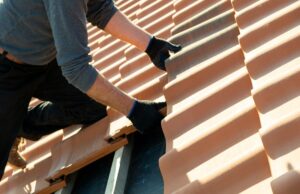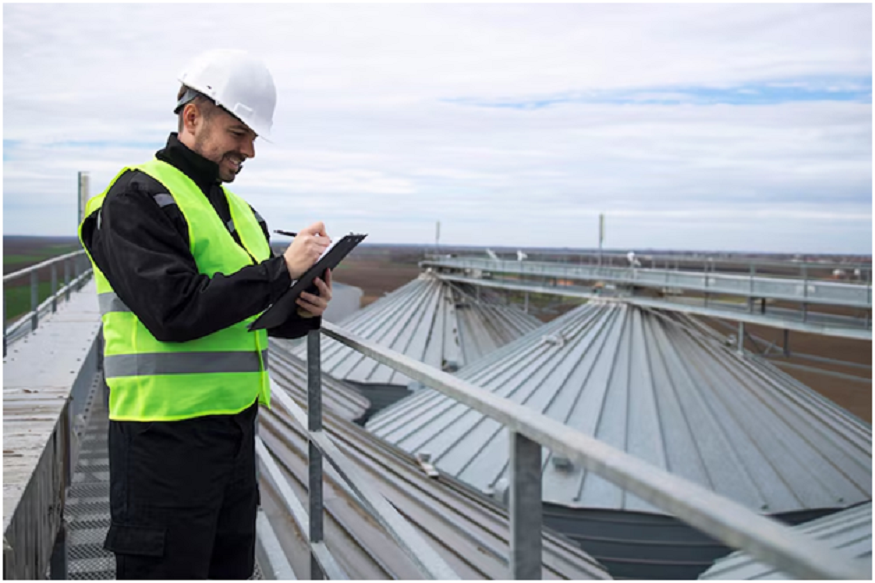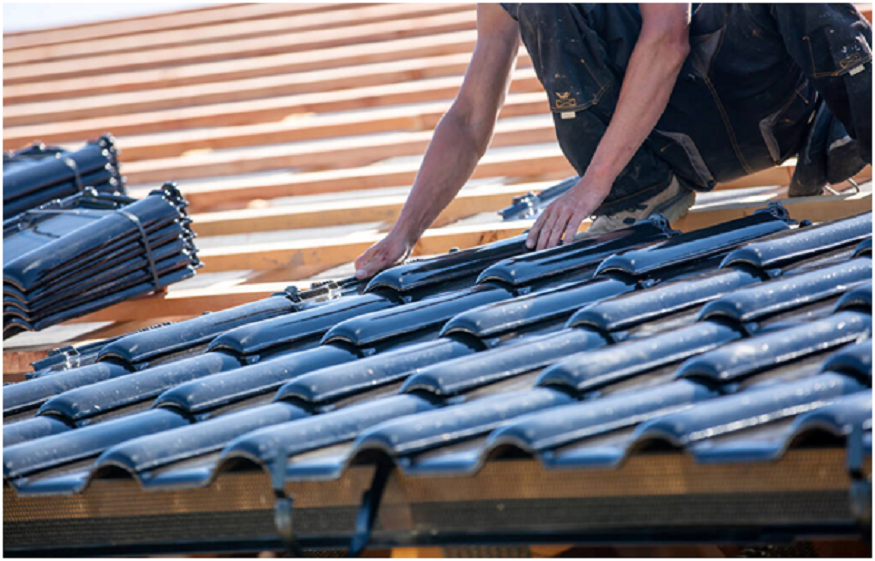As we know, to mitigate the effects of global warming, it is necessary to take an interest in the causes in all areas. We present to you today 5 solutions to reduce the heat of your roofs and take advantage of solar radiation. ☀️
White to refresh your roofs
Between the city center and its surroundings, temperature differences of up to 10°C can be observed. This phenomenon, called heat island, is partly due to the many concrete and tarmac installations in the city (roads, buildings, car parks). These spaces store solar energy throughout the day and release it at night in the form of heat. Similarly, dark roofs capture the sun’s rays, warming the building and its surroundings.
The French company Cool Roof France , has found an interesting way to increase the reverberation of radiation: painting roofs white.
Image from Cool Roof website
The protection can be applied to different types of supports inclined between 2° and 30° (concrete, polycarbonate, natural tiles, etc.). It reflects 95% of solar radiation. Watertightness is guaranteed for 10 years and reflectance for 15 years. The product is not flammable and does not release VOCs into the air.
In buildings, the effects are reflected in a reduction in the interior temperature (7° in summer in the Leclerc de Quimper), savings in energy consumption, better sealing, etc.
Have you always dreamed of a green roof without knowing how to go about it? Groendakpan may have the solution! This Dutch company specializes in green tiles. They are similar to classic tiles except that they are covered with a substrate and sedums. The tiles have standard sizes between 32 and 36 cm. They can be installed on roofs with a slope between 20° and 55° on construction and renovation projects. They are available throughout Europe.
Green tiles have many benefits and offer good thermal insulation, especially in case of high temperatures. By choosing vegetation for your roof, you increase the available plant surface and act for biodiversity. Roofs also improve water filtration and air quality.
Another way to equip your roof: solar panels
How do they work? Solar panels are made up of photovoltaic cells, which themselves contain silicon, a semiconductor material. When it is exposed to solar radiation, the electrons capture the energy transmitted by the photons. These movements produce a continuous electric current. The inverters then transform this current into alternating current, which allows its use.
Stacking is the most common method of installation. The panels are raised above the roof. It is necessary to carry out a feasibility analysis to ensure that the sunlight is sufficient and that the structure will be able to support the installation. The ideal is to have a sloping roof, facing south. However, installation is quite possible on flat roofs, which avoids de-tile. Garage, veranda or even garden thanks to weighted bins, many systems exist according to the budget, the available space and the desired production.
Do you know the SmartFlower? Developed by EDF ENR, this flower several meters high follows the sun as the earth rotates to capture light rays throughout the day. Several models exist, including one with a battery to store energy and another capable of charging electric vehicles. Each flower is made up of 12 petals, the equivalent of 18m² of solar panels with a 40% higher yield. However, the Smart Flower is only offered for self-consumption and its purchase price remains high. Count at least 15,000€. Another disadvantage, the installation is not designed to withstand the wind. In bad weather, the flower folds up and cannot catch the rays.
The particularities of the product and its consequent price did not appeal and the market remained a niche market. The Austrian company did not find enough interested customers to continue production and went bankrupt.
Photovoltaic tiles: the panels of the future?
There are three families of tiles. Photovoltaic tiles use solar energy to produce electricity. To supply a dwelling with hot water and heating, it is necessary to turn to thermal solar tiles. Hybrid tiles are able to do both.
It is the perfect compromise to generate green energy and benefit from a discreet installation.
More discreet than panels, photovoltaic tiles are integrated into the roof and offer the same benefits as conventional solar panels. No need to go through superimposition, the photovoltaic tile constitutes the roof covering.
They provide solar energy and insulation. In the same way as classic tiles, they ensure the waterproofing of the roof. Very solid, they are more resistant to bad weather. This criterion is particularly interesting for regions subject to difficult climates.
The tiles are available in different models to integrate with the architecture: slate, terracotta, concrete and wood. Nevertheless, most systems provide less energy than an average solar panel (150 Wp/m²), for a higher price.
The production can be entirely consumed, partially or totally sold to EDF at a fixed price for 20 years. The tiles make it possible to benefit from the same subsidies as those available for solar panels. Depending on the power of the installation, there are premiums ranging from €80 to €380 per kWp. VAT at a reduced rate of 10% is applicable if the tiles do not exceed a production of 3kWp.
The installations have a high cost which differs enormously depending on the company. The tiles have several types of guarantees: waterproofing, resistance to bad weather… 30 years are on average necessary to make the installation profitable.




